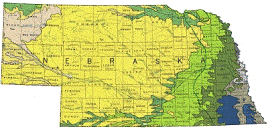United States Geological Survey

United States Geological Survey: Staff Publications
Document Type
Article
Date of this Version
2008
Abstract
Physical, chemical, hydrologic, and biologic factors affecting nitrate (NO3-) removal were evaluated in three agricultural streams draining orchard/dairy and row crop settings. Using 3-d “snapshots” during biotically active periods, we estimated reachlevel NO3- sources, NO3- mass balance, in-stream processing (nitrification, denitrification, and NO3- uptake), and NO3- retention potential associated with surface water transport and ground water discharge. Ground water contributed 5 to 11% to stream discharge along the study reaches and 8 to 42% of gross NO3- input. Streambed processes potentially reduced 45 to 75% of ground water NO3- before discharge to surface water. In all streams, transient storage was of little importance for surface water NO3- retention. Estimated nitrification (1.6–4.4 mg N m−2 h−1) and unamended denitrification rates (2.0–16.3 mg N m−2 h−1) in sediment slurries were high relative to pristine streams. Denitrification of NO3- was largely independent of nitrification because both stream and ground water were sources of NO3-. Unamended denitrification rates extrapolated to the reach-scale accounted for <5% of NO3- exported from the reaches minimally reducing downstream loads. Nitrate retention as a percentage of gross NO3- inputs was >30% in an organic-poor, autotrophic stream with the lowest denitrification potentials and highest benthic chlorophyll a, photosynthesis/respiration ratio, pH, dissolved oxygen, and diurnal NO3- variation. Biotic processing potentially removed 75% of ground water NO3- at this site, suggesting an important role for photosynthetic assimilation of ground water NO3- relative to subsurface denitrification as water passed directly through benthic diatom beds.


Comments
Published in J. Environ. Qual. 37:1133–1144 (2008).